Egon Schiele (1890 – 1918)
Get a Schiele Certificate of Authenticity for your painting (COA) for your Schiele drawing.
For all your Schiele artworks you need a Certificate of Authenticity (COA) in order to sell, to insure or to donate for a tax deduction.
Getting a Schiele Certificate of Authenticity (COA) is easy. Just send us photos and dimensions and tell us what you know about the origin or history of your Schiele painting or drawing.
If you want to sell your Schiele painting or drawing use our selling services. We offer Schiele selling help, selling advice, private treaty sales and full brokerage.
We have been authenticating Schiele and issuing certificates of authenticity since 2002. We are recognized Schiele experts and Schiele certified appraisers. We issue COAs and appraisals for all Schiele artworks.
Our Schiele paintings and drawings authentications are accepted and respected worldwide.
Each COA is backed by in-depth research and analysis authentication reports.
The Schiele certificates of authenticity we issue are based on solid, reliable and fully referenced art investigations, authentication research, analytical work and forensic studies.
We are available to examine your Schiele painting or drawing anywhere in the world.
You will generally receive your certificates of authenticity and authentication report within two weeks. Some complicated cases with difficult to research Schiele paintings or drawings take longer.
Our clients include Schiele collectors, investors, tax authorities, insurance adjusters, appraisers, valuers, auctioneers, Federal agencies and many law firms.
We perform Egon Schiele art authentication, appraisal, certificates of authenticity (COA), analysis, research, scientific tests, full art authentications. We will help you sell your Egon Schiele or we will sell it for you.
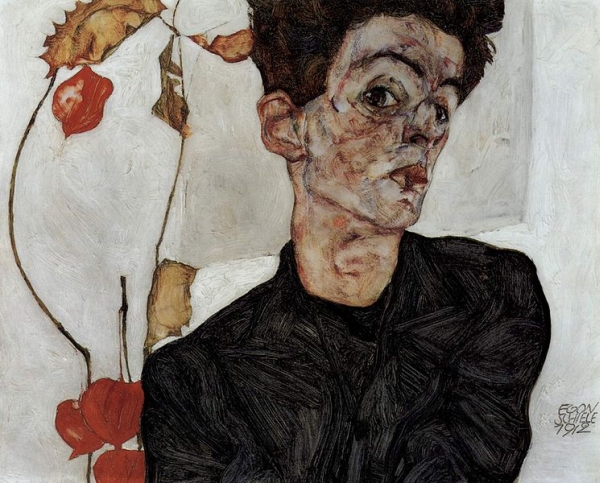
1912 Oil on Canvas 32.2 x 39.8 cm
Egon Schiele was an influential, figurative painter from Tulln, Vienna. While Schiele developed his own highly distinguished style, the influence of his teacher, Gustav Klimt, can be recognized in his work.

1914 Watercolor on Paper 48.3 x 32 cm
Schiele recognized his interest in art at an early age and in 1906, he enrolled at the Kunstgewerbeschule. During his first year of study, Schiele was sent to a more traditional school known as the Akademie der Bildenden Kunste. In 1907 Schiele began to be mentored by Klimt, who was already an established and well-recognized painter. Klimt introduced Schiele to local art and crafts workshop and helped him set up a network of patrons.
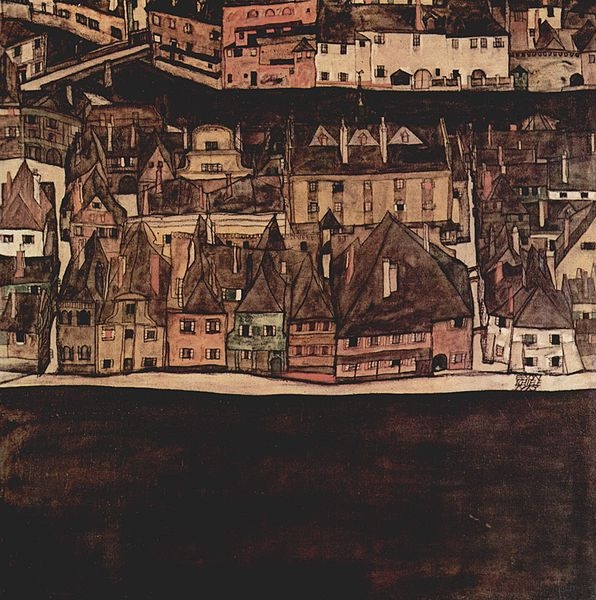
1912 Oil on Canvas 89.5 x 90.5 cm
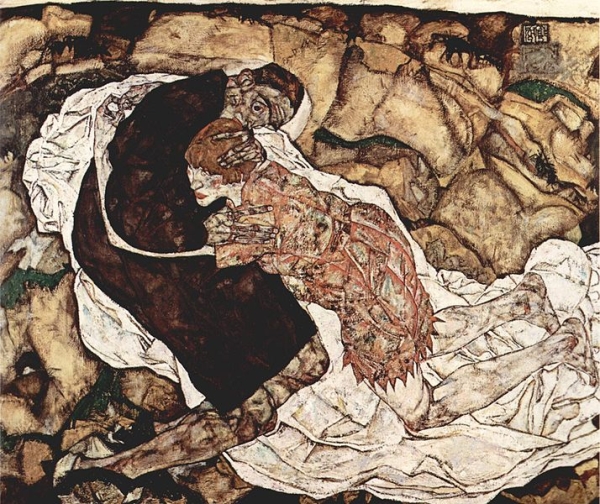
1915 Oil on Canvas 150.5 x 180 cm
By 1908 Schiele had his first exhibition in Klosterneuburg. The following year Schiele left the Academy and started Neukunstgruppe “New Art Group”. Outside of the Academy Schiele began to expand on human anatomy and explore sexuality. The sexual content of Schiele’s work often caused controversy among conservative critics.
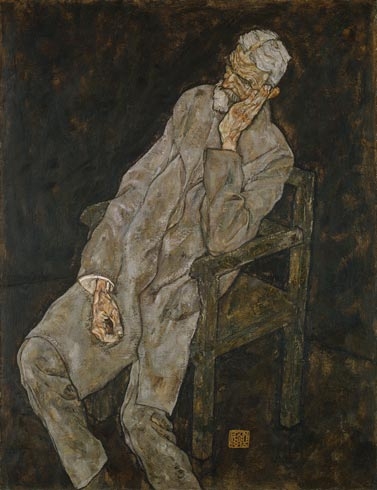
1916 Oil with Wax on Canvas 141 x 110.8

1917 Watercolor, gouache, pencil 46.4 x 29.8 cm
In 1909 Klimt invited Schiele to participate in the Vienna Kunstschau among such artists as Edvard Munch and Jan Toorop and Vincent Van Gogh. In 1911 Schiele began to live with one of his models, Valerie (Wally) Neuzil. The couple moved to a small town in Bohemia where his mother had been born. Schiele was not well received in the small community and again relocated to Neulengbach, outside of Vienna. In Neulengbach, law enforcers saw Schiele’s work as pornographic and arrested him, detaining him in prison for nearly one month. In prison Schiele painted a series of pieces related to his experiences.
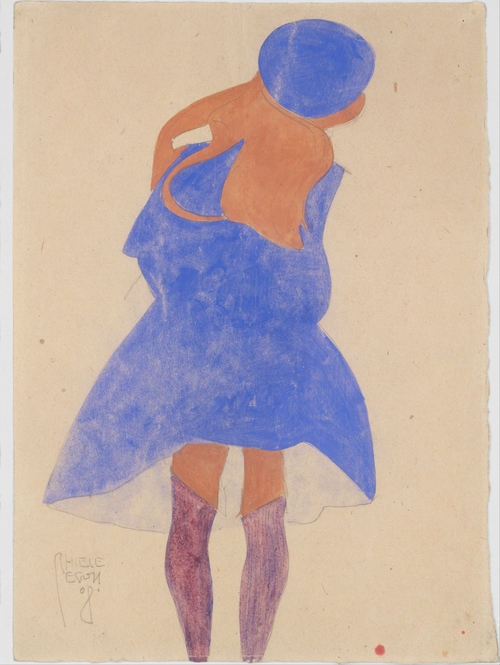
1908 Gouache, watercolor, pencil 31.4 x 23.2 cm
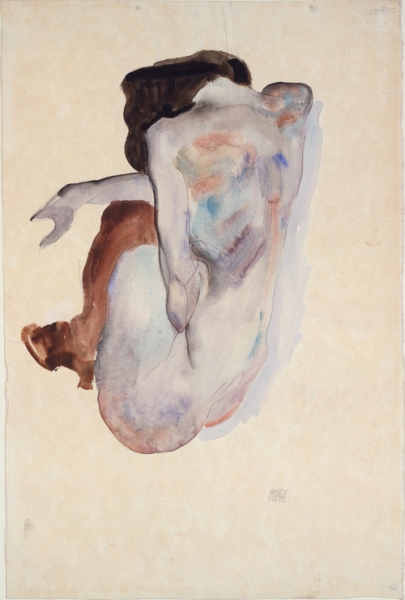
1912 Watercolor, gouache, pencil 48.9 x 32.1 cm
In 1915 Schiele decided to marry Edith Harms, a woman from a socially accepted family. Shortly after his marriage Schiele was called to military duty and was stationed in Prague guarding Russian prisoners. By 1917 Schiele returned to Vienna and returned his focus to painting. Schiele produced an impressive body of work and was invited to participate Secession’s 49th exhibit in Vienna. From this point on Schiele received numerous show invitations and commissions. Schiele exhibited in Zurich, Prague, Budapest, Munich, Paris and Cologne.

1911 Watercolor, gouache, pencil 51.4 x 34.9 cm
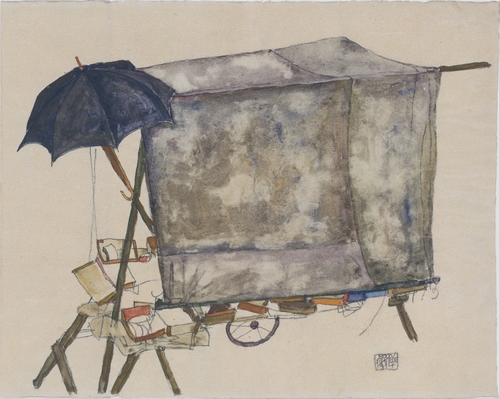
1914 Watercolor, gouache, pencil on paper 31.4 x 47.9 cm

1911 Watercolor and pencil on Paper 56.5 x 36.8 cm
In 1918 Schiele’s life was cut short by the Spanish flu, which also took the life of his pregnant wife. Schiele was only twenty-eight years old at the time of his death. While Schiele did not live a long life his legacy has kept his spirit alive. Schiele’s paintings are now in museums and collections in Vienna and around the world.
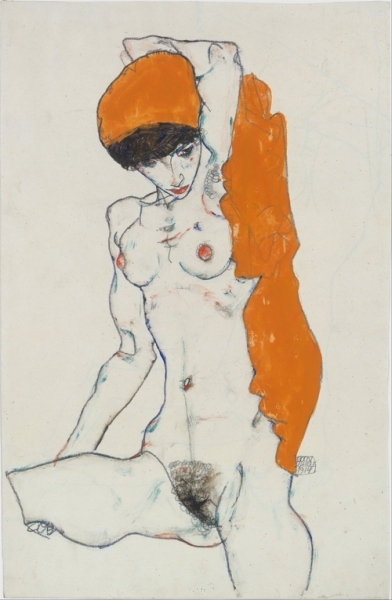
1914 Watercolor, gouache, pencil on paper 46.5 x 30.5 cm

1917 Watercolor and charcoal on paper 46 x 29.5cm
Do you think you own a painting by Egon Schiele? Contact us. We are the experts on Egon Schiele.
Reviews
1,217 global ratings
5 Star
4 Star
3 Star
2 Star
1 Star
Your evaluation is very important to us. Thank you.
